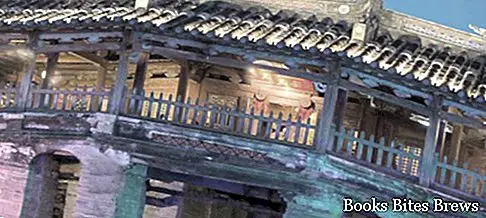What to see in Hoi An, itinerary including the main places of interest, including historical buildings, Japanese bridge, meeting rooms and Chinese temple.
Tourist information
Historic town of central Vietnam, Hoi An is located on the banks and mouth of the Thu Bon River, which flows into the South China Sea.
The city boasts an illustrious past, as it was a major commercial port.
Traders stayed in the city for a long time, especially from the fifteenth to the nineteenth century, when ships from Eastern and Western countries, especially Chinese and Japanese, landed at its port, and its warehouses were full of valuable goods.
At the end of the nineteenth century the port lost importance, due to the navigation made impossible by the debris that had filled the Thu Bon river.
Despite this, the architecture of the old city already showed a superb fusion of cultures, especially Chinese, Japanese and, later, European, which can still be admired in the over nine hundred historic buildings protected by UNESCO.
The old city has maintained its historic urban fabric, with an original street plan characterized by ancient buildings overlooking the river.
Almost all the old houses, including the Meeting Rooms built by the Chinese communities who met in the buildings according to the province of origin, can be visited.
These also include the building where the Meeting Room of the Fujian Congregation is located, later transformed into a Temple for the worship of Thien Hau, a divinity of the Fujian province.
What see
The small covered bridge, called Cau Nhat Ban and built by the Japanese community at the end of the sixteenth century, as a link between its neighborhood and the Chinese area, located on the other side of the river, is a nice attraction of the old city.
Also in Hoi An there are temples, such as the Quan Cong Chinese Temple, the Phuoc Lam Pagoda, the Chuc Thanh Pagoda, the Phac Hat Pagoda and various Museums, including the Museum dedicated to the Commerce of Ceramics, with artifacts from all of Asia, the Museum of History and Culture, where objects from the era prior to the Cham and the phase in which Hoi An was an established port are exhibited.
Recommended readings- Hoi An (Vietnam): what to see in the historic town
- SaPa (Vietnam): what to see in mountain cities
- Vietnam: useful information
- Hanoi (Vietnam): what to see in the capital
- Ha Long: a bay off Hon Gay
Other museums are the Traditions museum, which covers local customs and culture, and the Sa Huynh Culture Museum, which displays artifacts dating back to the era of the Dong Son civilization of Sa Huynh.
It is also interesting to visit the Craft Workshop, which is located in an ancient house that belonged to a Chinese merchant.
In the laboratory you can admire the typical crafts of Hoi An and their production phases.
In the house there is also a space dedicated to traditional shows.
Hoi An is also famous for the colored lanterns, which decorate and illuminate the whole town, for the tailoring shops, where it is possible to have tailored clothes sewn, and also for the various gastronomic specialties that distinguish it.
The best time to visit Hoi An is from May to July, preferably that including the day of the full moon, falling on the fourteenth day of each lunar month, because in the evening, in the historic center, the electric lights are largely turned off and everything is enriched by the charm of the light diffused by colored lanterns, some floating on the river, others placed in the streets, while music and dancing contribute to create a very suggestive atmosphere.
Near Hoi An are the remains of the My Son Shrine and the Cham Kim Islands, which can be reached by boat in about half an hour, starting from the D Bach Dang pier.




